-Anand Krishnan
Every new birdwatcher starts off identifying birds using illustrations of plumage in a field guide. Building field skills, we all eventually use a suite of traits to ID birds, of which plumage is just one. Behavioural traits, habitat and other features are also often helpful, as is vocalization. For birds that are difficult to see clearly and where species closely resemble each other, learning vocalizations is key to successfully identifying them and understanding their abundances and distributions. Here, I illustrate how we “read” vocal recordings to identify species using one such group of birds.
Prinia, the wren-warblers, are common and conspicuous components of the avifauna across India. These skulking understory birds with their jaunty, flicking tails can be easy to find when breeding (the monsoon in Peninsular India), but outside of the breeding season, many of them moult into duller non-breeding plumages that can cause some tricky identification problems. This is particularly relevant when one uses photographs as an identification guide. Many confusing plumage features may overlap between species, and this has the potential to result in misidentifications, particularly if the bird is not calling. Views of non-breeding prinias are often fleeting, and clear identification is not always possible by sight (particularly if one is trying to avoid using tapes or pishing). The difficulty in identifying prinias is a further hindrance to our understanding of these charismatic little birds and their distributions. Proper knowledge of their habitats and vocalizations is, therefore, essential to properly identify them in the field. Once vocalizations are known, these birds, often shy and skulking, can be surprisingly common in their preferred habitats.
Eleven species of Prinia are found in India, and this writeup focuses on the seven species most commonly found in cities and human-dominated habitats throughout Peninsular India and the northern plains. Through fieldwork, we have an accumulated library of vocalizations on these seven species, and I present them here because they may prove helpful to birders in identifying prinias correctly. I also discuss general observations on their habitat, and some tricks I have learned over the last few years to separate these seven species, even when the birds remain unseen. This is not by any means a comprehensive repertoire, and there may be some variation between geographic regions, but following these pointers should help ID some potentially challenging species. I have found these calls, once known, very helpful both in locating and identifying members of this genus, and the hope is that they will help improve local and broad-scale distributional information. Cross-referencing these against call descriptions in Pamela Rasmussen’s Birds of South Asia or an online song database such as Xeno-Canto should also prove instructive. Finally, downloading free mobile apps like SpectrumView is a great field aid, because you could actually record and create spectrograms of songs. That will help match field recordings to databases or this article after recording, to be able to identify the singer. A spectrogram (you’ll see more below, plotted in the Cornell Laboratory of Ornithology’s Raven Pro) is a plot of time on the x (horizontal) axis and frequency (a measure of how high-pitched the sound is) on the y (vertical) axis. Louder sounds are darker on the spectrogram. Armed with this information, you can “view” sounds as they are recorded, and learn to understand the difference between different species. Frequency is measured in kilohertz (kHz), or thousands of cycles per second; the higher this value, the higher-pitched the sound is. For example, the deep booms of coucal are at roughly 0.4 kHz, and the high-pitched squeaks of a Small Minivet are around 7-8 kHz. With this primer in mind, I will now describe some common vocalizations of seven species of prinia that are the focus of this article.
In general, most species of Prinia are wary and skulking, diving under cover when approached. They are particularly wary of people on foot in my experience, especially during the non-breeding season. When breeding, however, they may be approached quietly and can be quite confiding, especially when singing. Sitting very still and keeping quiet will allow a close approach, the birds often coming in close to investigate. I have had some species hop close to my feet, and others fly past my head so close that I could feel the wind from their wings, just by keeping quiet. When startled, they fly in a characteristic “see-sawing” pattern, pitching back and forth between their rounded bodies and their long tails. In many species, the wings make a snapping sound in flight, described by Salim Ali as sounding like electric sparks. Once you identify the presence of a prinia, you can use the keys below to try and ascertain which species it is from its calls. As mentioned earlier, I will primarily make use of vocalizations to differentiate species here, and this is the easiest way to tell these birds apart (although, with practice matching calls to appearance, one can get pretty good at separating Prinia by plumage as well).
1. Ashy Prinia (or Ashy Wren-warbler): Prinia socialis
This is the common and familiar wren-warbler of most Indian cities including Bengaluru and Pune, where it is a common inhabitant of gardens and backyards. I have also found and recorded it in the low trashy vegetation near urban water bodies, farmlands in the vicinity of Pune, the edges of woods and wooded areas, and along footpaths and walking tracks in the jungle. In my experience, this species is more tied to human activity than the others and often occurs within cultivation or standing crops (unlike some of the other species). The dark-gray upperparts render it generally one of the easier prinias to identify, but its song has some structural similarities to a tailorbird, being repeated at similar rates, and the two frequently occur together in urban areas. A recording app should prove helpful to a newcomer in identifying the Ashy Prinia’s call, especially in two noteworthy points. First, draw an imaginary line through the approximate center of the song you have just recorded. An Ashy Prinia should be centered at about 4.5-5 kHz (going from 3.5-6.5 kHz), and a tailorbird is much lower down, around 3 kHz. Second, most Ashy Prinia song notes usually end on an upward inflection, sounding almost interrogative, whereas tailorbirds tend to sweep downwards. The reason for this interrogative sound is a rise in frequency toward the end of each note, which can be seen in the spectrogram below (Fig1a). Although there is some variation in each song note, they all form some variation of chirreet-chirreet-chirreet, repeated at length in the breeding season, and higher-pitched than a tailorbird.
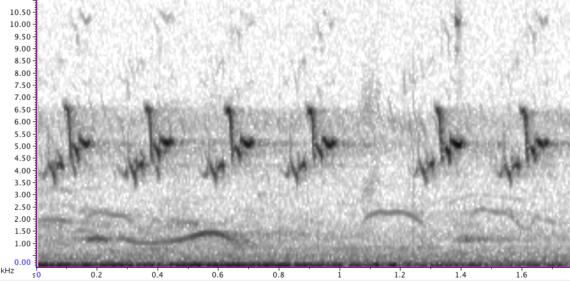
Fig1a- Song of the Ashy Prinia, Maharashtra by Shivam Chitnis and AK
Call notes of the Ashy Prinia include an emphatic dididit, either in isolation or repeated a few times, and the other, a diagnostic alarm call, is a nasal, accelerating nyaaah-nyaah-nya-nya-nya which forms stacks of harmonic notes from about 3-6.5 kHz. Harmonics on a spectrogram (Fig1b) appear as stacks of the same note lying one on top of the other. Mathematically, these are integer multiples of the lowest band, so you will see parallel bands, the second being at twice the frequency of the first, and so on. This can clearly be seen in the spectrogram of an alarm call below. These calls are potentially confusable with the alarm call of the more range-restricted Yellow-bellied Prinia, but with some important differences.
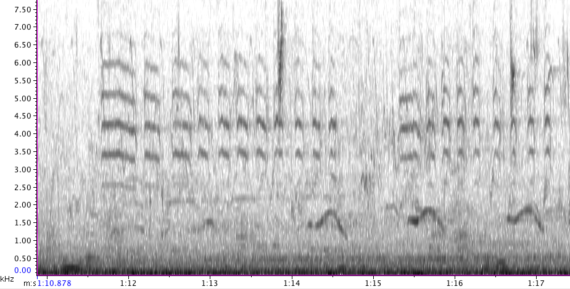
Fig1b- Alarm call of the Ashy Prinia, Maharashtra, by Shivam Chitnis and AK. The Yellow-bellied Prinia has a somewhat similar alarm call, see below.
2. Yellow-bellied Prinia or Wren-warbler; Prinia flaviventris
This bird is found throughout the Indo-Gangetic and Brahmaputra floodplains, typically in tall, damp vegetation near water. Although the Ashy Prinia may also occur in this habitat, it is generally found in a much wider range of habitats than the Yellow-bellied. My primary experience with this bird is in Northeast India, where it is typically one of the slower-moving and more confiding of the prinias. Once seen, it is unmistakable, but it frequently calls from within tall grass and remains hidden from view. Listening for its vocalizations (particularly the song) is the best clue to its presence, as the calls have some similarity to the Ashy Prinia (especially to the untrained ear). Its songs are strongest between 3-5 kHz (Fig2a), consisting of a gurgling series of notes (sometimes descending in frequency) that recall the sound of running water. The bird may perch out on an open grass stem while singing, diving back under cover immediately after.

Fig2b-Song of Yellow-bellied Prinia, Arunachal Pradesh, by Sutirtha Lahiri and AK. The songs may also descend strongly in frequency.
It also utters a didit call note from 3.5-5.5 kHz (Fig2b) with a resemblance to that of the Ashy Prinia (although slower), and its likely alarm note is a similar nasal nyaah. However, in my experience, it is mostly uttered as a single or double note, and not accelerating in the way the Ashy Prinia does.

Fig2b- Didit call notes of the Yellow-bellied Prinia, Arunachal Pradesh by Sutirtha Lahiri and AK. The Ashy has a similar call but faster and higher pitched.
3. Plain Prinia or Indian Wren-warbler: Prinia inornata
After the Ashy Prinia, this is the species most likely to be observed in Indian cities and agricultural areas. I have seen it in grassland, mixed thorn-scrub and grass, the grassy understory of dry forest, low grass tussocks next to ponds and rivers, patches of scrubby vegetation inside urban areas, elephant grass patches, and even hopping on the ground in recently burnt areas or urban lawns! It usually lives (and sings) close to the ground, only rarely ascending into low trees some meters of the ground. This species poses an identification challenge (especially in the non-breeding season) with the similarly plumaged Jungle and Rufous-fronted Prinias, and to an untrained ear, there are several structural similarities to the song of a Graceful Prinia. When breeding, its distinctive buzzy tzzit-tzzit-tzzit-tzzit song, sounding like pulsing static or an insect, and strongest around 4-6 kHz (darker on the spectrogram; Fig3a), helps tell it apart in most of its range.
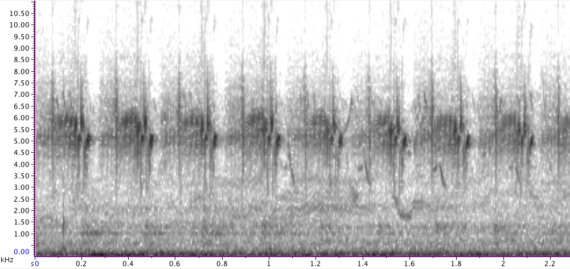
Fig3a- Song of a Plain Prinia, Maharashtra, by Shivam Chitnis and AK.
Outside of the breeding season, this song is infrequent, and call notes (two of which are shown and discussed below) are the best way of identifying this species. In alarm or during pair confrontations, Plain prinias utter an irregular series of hard tHILp notes between 3.5-5 kHz, something like tHILp—–tHILptHILp—-tHILp——-tHILptHILptHILp. This irregularity (and the higher pitch) is key to telling them apart from a Jungle Prinia. The most diagnostic call, however, and one that is consistent across the Indian range of this species, is a sharp buzz between 4-6 kHz (the BZZT call; Fig3b), which helps differentiate this species from all others. It is lower in pitch and broader across the frequency band than the ‘snore’ call of the Graceful Prinia, and is often uttered in flight when the bird flushes. This call has given away the presence of the Plain Prinia to me in Pune, Northwest and Northeast India, although there may be some regional variation between the subspecies. Training your ear to listen for it will help detect and identify this bird across all seasons.

Fig3b- tHILP notes (darker, shorter notes on the left), and the smudgy buzz notes (middle, right) of a Plain Prinia, Arunachal Pradesh, by Sutirtha Lahiri and AK.
4. Jungle Prinia or Wren-Warbler: Prinia sylvatica
This, the largest prinia found south of the Himalayas, is a challenge to separate from the Plain Prinia, especially in the non-breeding season. In addition, both sometimes develop some rufous on the forehead, and can appear similar to the Rufous-fronted Prinia as well. Although found in a number of scrub-jungle habitats, I have always found it most common in thorn scrub, often mixed with grass, in rocky, hilly areas such as the Aravalli range or the hills in and around Pune. In general, the Jungle Prinia is closer in size to a bulbul, and in the breeding season, sports a greyish face and a stout black bill with whitish outer tail feathers. It is sluggish compared to the other species. The best way to identify this species when not familiar with it, however, are its vocalizations. Typically uttered from the top of a tall tree (or in an upward display flight ending with a dive), the song is a tsit-tsrewt tsit-tsrewt tsit-tsrewt which can sometimes go on for over a minute. Jungle Prinia can utter this song sometimes faster, sometimes slower, but the notes are always longer than the Rufous-fronted Prinia, always span a broader range of frequencies (all the way from 2.5-8 kHz) (Fig4a), and usually end on a downward inflection (the Rufous-fronted is upward, although this last may not always be true due to individual variation and should be used cautiously), sounding drier and more deliberate than the latter.
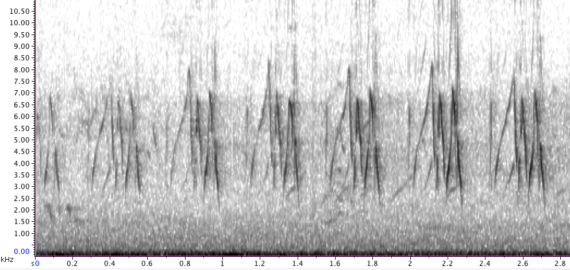
Fig4a- The song notes of the Jungle Prinia span a large range of frequencies. By Shivam Chitnis and AK, Maharashtra
Jungle Prinias also have multiple calls: a whistle that ascends from 4.5 to 7.5 or 8 kHz (Fig4b), and then sharply descends to 2.5 kHz (wheee-chut), which is unlike that of any prinia, and a descending note that I have heard much less often than the others.
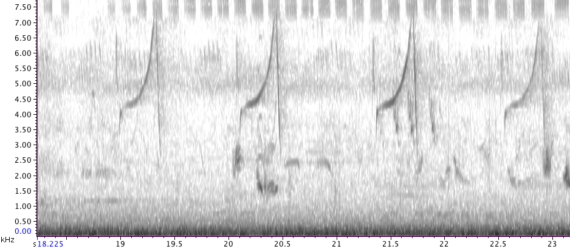
Fig4b- Whistle note of a Jungle Prinia, Maharashtra. AK.
Their alarm call is the best differentiator from other prinias, especially if the bird is seen, a relatively low-pitched pip-pip-pip-pip-pip-pip that can go on for long stretches. This call sometimes starts with a whispered thick-thick-thick before hitting its full stride. This call has structural similarities to the call of the Jungle Bush-Quail, which occurs in the same habitats and is also a rapid trill at around 2-3 kHz, but the Prinia’s alarm is slower (about 14 notes per second, the quail is at 18-19), spans a broader range of frequencies (about 2 to almost 3.5 kHz; see Fig4c, whereas the Jungle Bush-Quail is between 2.2-2.8), and has a clear p-sound to each note that the quail’s tremulous whistle does not. A recording is a surefire way to help verify the ID.
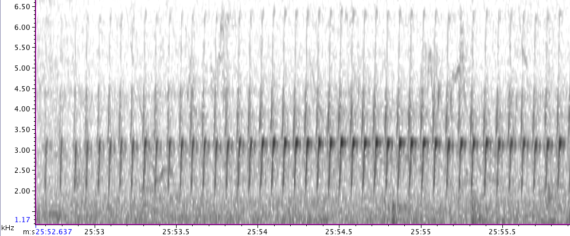
Fig4c- Alarm notes of a Jungle Prinia, Maharashtra. AK.
5. Graceful Prinia or Streaked Wren-Warbler: Prinia gracilis
We have always found the Graceful Prinia commonest near water, being found in riverine grasslands in the Northeast, and low desert scrub next to water bodies in the Northwest. It is a common bird, but can be very difficult to see, slipping through grass stems like a mouse. On the surface, its song resembles that of the Plain Prinia, but a closer listen reveals that it is generally higher pitched (from 4 all the way up to 8 kHz; Fig5a), and has two alternating notes zzLIT zzLIT zzLIT, one buzzy and the other a hard, slightly metallic sound. Sometimes, the metallic note continues after the song as a LIT LIT LIT as well. If recorded, it can be distinguished from the Plain Prinia both by the presence of these two notes and the fact that it goes higher, all the way above 8 kHz.
Its call note looks on a spectrogram, superficially like a Plain Prinia call, but sounds more like a snore (tsrrrrrrr) than a buzz (3-7 kHz in the example shown here, but can sometimes go a bit higher). This snore call is distinctive, and immediately betrays the presence of a hidden Graceful Prinia. Once familiar with this call, the bird proves to be very common in its preferred habitats. Sometimes, birds emit an accelerating series of snore calls, ending in a trill that superficially resembles the Rufous-fronted Prinia. Where the two species overlap in Northwest India (I have observed them in the same bush in Rajasthan), the snore calls help separate the Graceful immediately. The much larger and rarer Swamp Grass-Babbler, formerly considered a prinia, coexists with the Northeastern subspecies, but has a very distinct and complex song.

Fig5a- Snore calls followed by song of a Graceful Prinia, Arunachal Pradesh. Sutirtha Lahiri and AK.
6. Rufous-fronted Prinia or Wren-Warbler: Prinia buchanani
The Rufous-fronted Prinia is a bird of sparse, semiarid scrub, mostly on flat land, up to the foot of rocky hills and plateaux. In my experience, it tends to avoid cultivation, occurring instead in growth on the fallow land in between cultivated plots. In such habitats, it is a common bird once its song is known. Sprightly and fast-moving, it disappears at the slightest alarm, sometimes diving to the ground where it often forages. This renders it difficult to see the diagnostic white tail-tips, and the presence of rufous foreheads on non-breeding Jungle and Plain prinias poses a serious identification problem, but its song is very distinctive. This song begins with a diagnostic series of stuttering notes ending in an upward weET, before uttering a series of tee-di-reet-tee-di-reet-tee-di-reet notes.
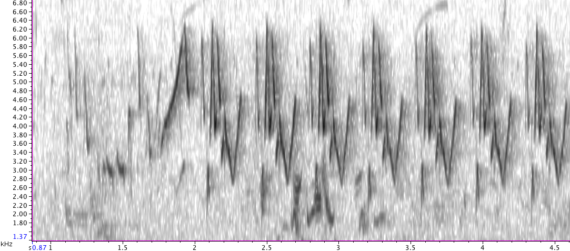
Fig6a- Song of a Rufous-fronted Prinia, Maharashtra, AK. The notes at 2.4-2.8kHz between 2.5 and 3 seconds are a bulbul. Note the faint stuttering downward notes at the beginning, the strong upward weET between 1.5 and 2s, and the repeating notes after.
These songs span a narrower range of frequencies than the Jungle (3 to just over 6 kHz compared to about 2-8 kHz for the Jungle; see Fig6a), are generally faster, and end on an upward inflection instead of downward (though this last is not universal). In Rajasthan at least, some songs oscillate between higher and lower pitched tee-di-reet notes, giving rise to a see-sawing effect. The call note is also an immediate separator from the Plain and Jungle Prinias, a high-pitched, descending squeaky trill (but see the Graceful for more). In the non-breeding season, this trill (which starts at over 7 kHz, and descends to about 4 kHz) is the best way to detect Rufous-fronted Prinia.
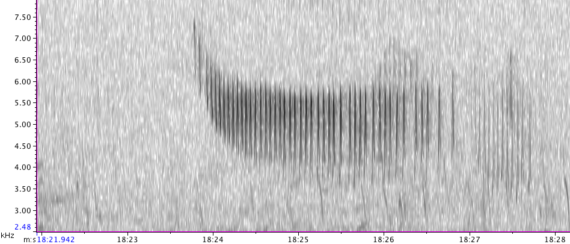
Fig6b- Descending trills of a Rufous-fronted Prinia, Rajasthan. Sutirtha Lahiri and AK.
7. Grey-breasted Prinia or Franklin’s Wren-Warbler: Prinia hodgsonii
This small, highly active Prinia is one of the most arboreal of the genus, frequently being seen in wooded areas and gardens, forest edge, deciduous forest and dense, hilly thorn scrub. It also occurs in grassland interspersed with wooded patches. Conspicuous and easy to identify in the breeding season, its dull non-breeding plumage can be a challenge unless familiar with its calls. Its liking for pollen and flower nectar can give it a reddish-brown forehead that necessitates care when identifying this species. I have observed it regularly singing on the wing. Possessing a repertoire more complex than other Indian prinias, flocks and family groups utter a complex jumble of various notes, the breeding male usually ascending to a conspicuous perch to utter the breeding song. Some notes of the song may recall a Rufous-fronted Prinia (which typically does not occur in the same habitats), but the Grey-breasted always ends its songs with a ‘rattle’ (a TAT-TAT-TAT-TAT; see Fig7a, or a slower T-CHUCK-T-CHUCK-T-CHUCK ; see Fig7b). The ‘rattle’ is much louder than the rest of the song, spans a larger range of frequencies (3-8.5 kHz) and can be detected for quite some distance.
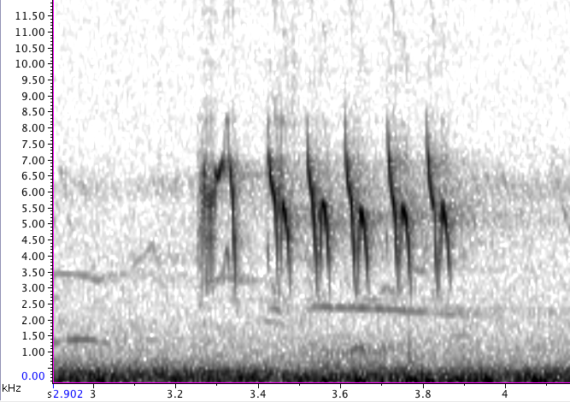
Fig7a- Song1 of the Grey-breasted Prinia, Maharashtra, Shivam Chitnis and AK
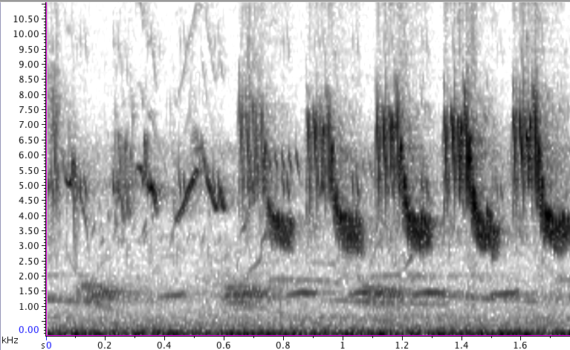
Fig7b- Song 2 of the Grey-breasted Prinia, Maharashtra, Shivam Chitnis and AK. Note the multiple different note types, but the song always ends with 4-5 repeats of the same note (the ‘rattle’).
Throughout the year, an emphatic CHEE-CHRRT is frequently uttered, as is a high-pitched, immediately recognizable hee-hee-hee-hee (strongest between 6-6.5 kHz, although it may sometimes start at around 5 kHz and ascend, see below). In the non-breeding plumage, the latter, and the tendency to move inconspicuous, noisy flocks should immediately set the Grey-breasted Prinia apart from all other species. The calls are also important because these sprite-like birds move extremely fast, barely allowing one to set binoculars on them before disappearing into the foliage.

Fig7c- High-pitched hee-hee-hee call notes of a Grey-breasted Prinia, Maharashtra, Shivam Chitnis and AK.

Fig7d- High-pitched hee-hee-hee call notes of a Grey-breasted Prinia, Maharashtra, Shivam Chitnis and AK.
Thus, although at first glance, Prinia may seem a tricky genus for a beginner to identify, using a few simple pointers about calls can make a birder’s life much easier. Vocal identification may seem daunting at first, but using this article as a guide together with a good app for making spectrograms will help you identify these birds with ease. Five other species of prinia not covered in this article, the Rufescent (P. rufescens), the Grey-Crowned (P. cinereocapilla), the Striated (P. crinigera), the Black-throated (P. atrogularis) and the Hill Prinia (P. superciliaris), are primarily found in the Northeast of India and the Himalayas and are absent from the plains. That makes a total of 12 species in India! As many as four or five species may be found together or close to each other in some parts of India, each species occupying its own preferred habitat. The Ashy Prinia, which is one of the most common and familiar species, appears to be increasing with the spread of human habitation. Using these species to learn about bird vocalizations is not just a rewarding experience, but helps us understand more about their biology, distributions and population across India.
My thanks to Shivam Chitnis and Sutirtha Lahiri, who helped with recording these songs.
–Anand Krishnan, Department of Biology, Indian Institute of Science Education and Research (IISER) Pune, Pashan Road, Pune 411008, Maharashtra.

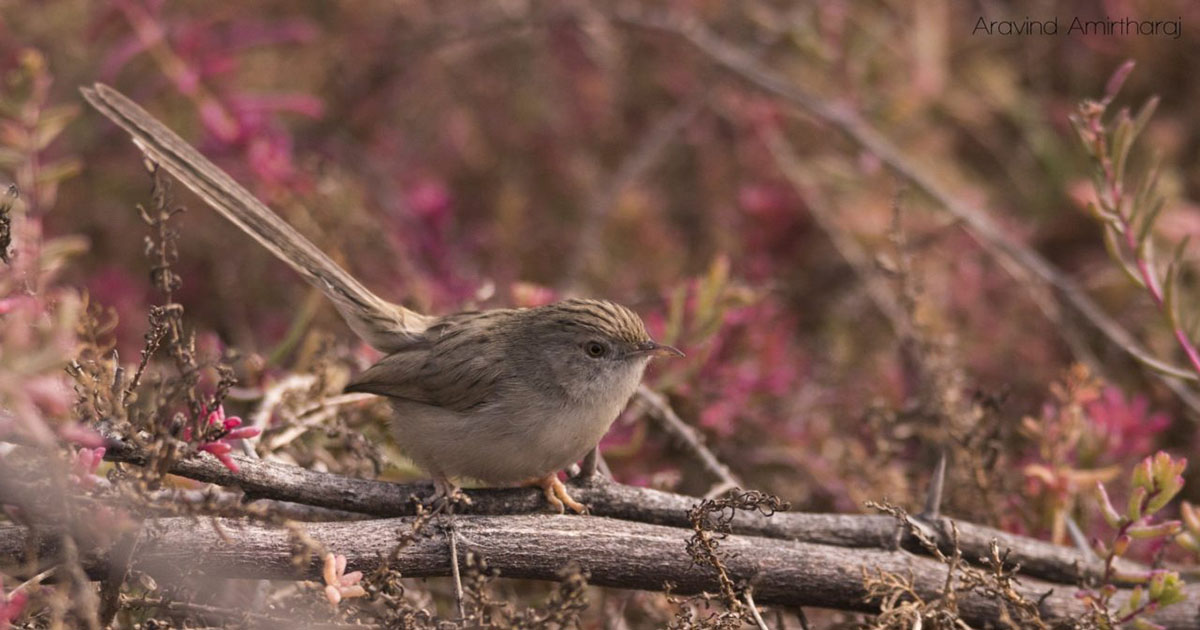
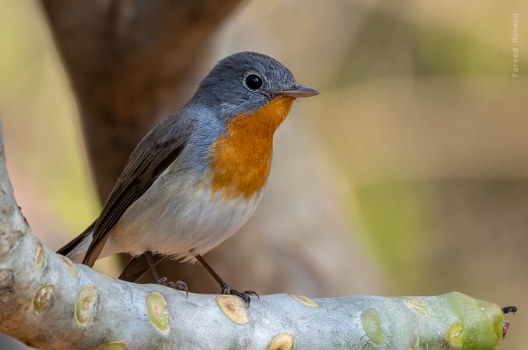
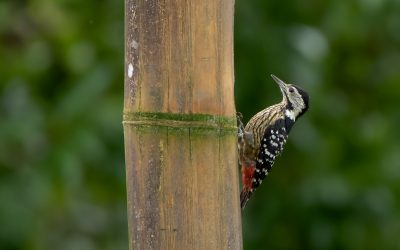
Wonderful and very helpful for a beginner like me
Hi, I find this information very useful because recently I’d get a close glimpse of this bird ashy prinia(thanks to your guide I wouldn’t reach to species level). I have questions to ask about bird’s behavior especially during the moulting period. I was very lucky to witness the moulting but honestly I’m very confused about the whole process of moulting. Does the bird get a bit weak during the process? Why does the bird hangs upside down? And why the heck this bird shed its tail in my bedroom? (The last one don’t take it seriously. I was joking, maybe I wasn’t. Either way I’m still searching it’s moulted tail feathers in my bedroom 😉
Note: the bird was in my bedroom because I rescued the bird. Don’t forget to keep the water for the birds during the summer.
Very useful.
Very helpful,and educational descriptions,
Songs and calls of all the Priniyas to me.
1 Ashy Prinia 49 sound files 2 Plain Prinia 9 sound files 3 Jungle Prinia 34 files and fourth Grey-breasted prinia 16 All these primias are in and around Sangli and all my collection is available on ebird.
In the article third type of call mentioned for Jungle Prinia is made by a male when a female comes to feed chicks this is the most apparent reason I found. With the help of this call I could locate the active nest.
Except for Ashy Prinia, all prinias are primarily silent during the non-breeding season. Most of these prinias make some sound by snapping of beaks or wing, Ashy Prinia mainly makes some sound with the help of wing beat. This happens in the only breeding season and male makes it. I have observed the singing bird when fly makes this sound. Another partner which is often silent doesn’t make a sound with the wing. I have many recordings of this type of call available on ebird.
I think Ashy prinia may be having some development in plumage to enable him make such sound and it has definite purpose in attracting mate.